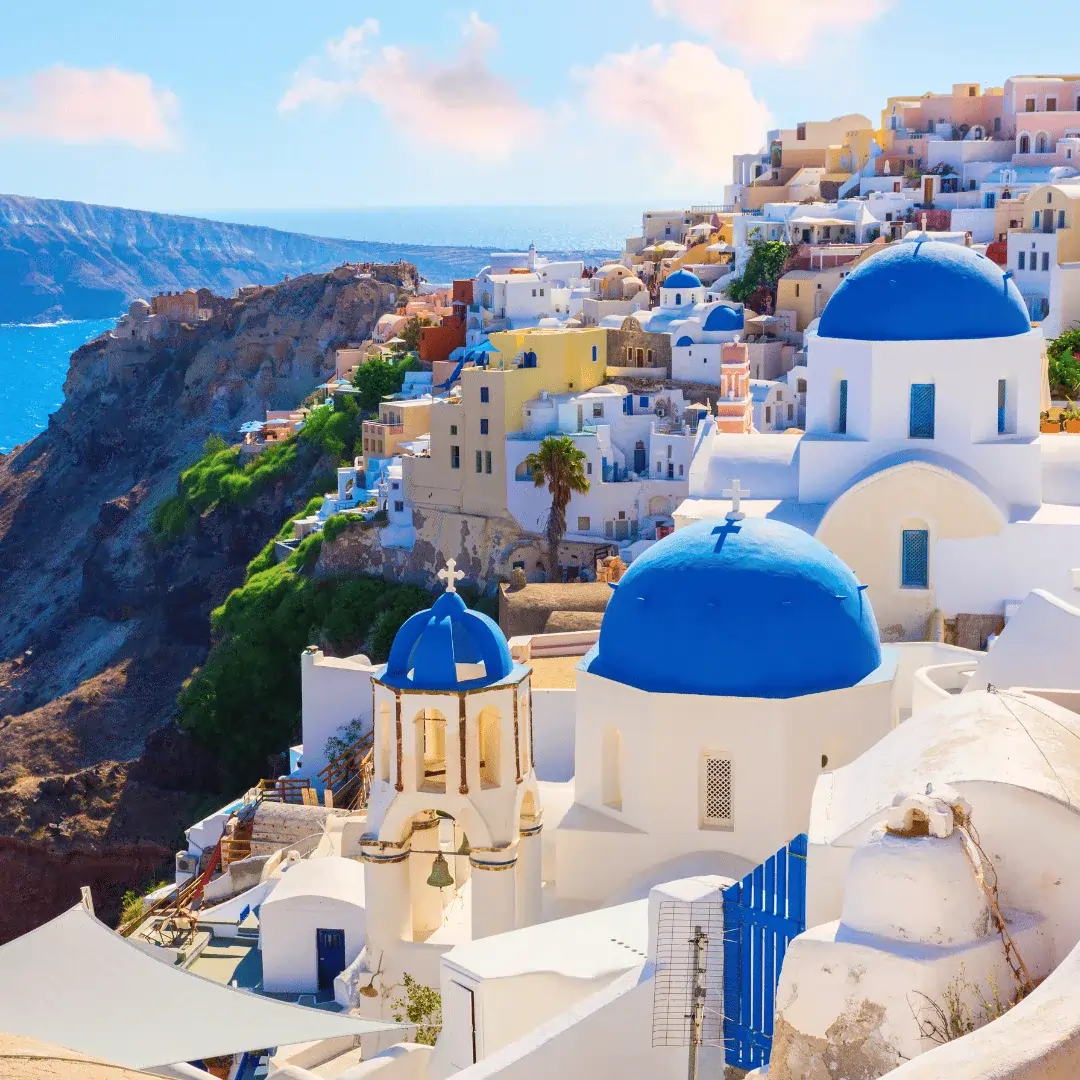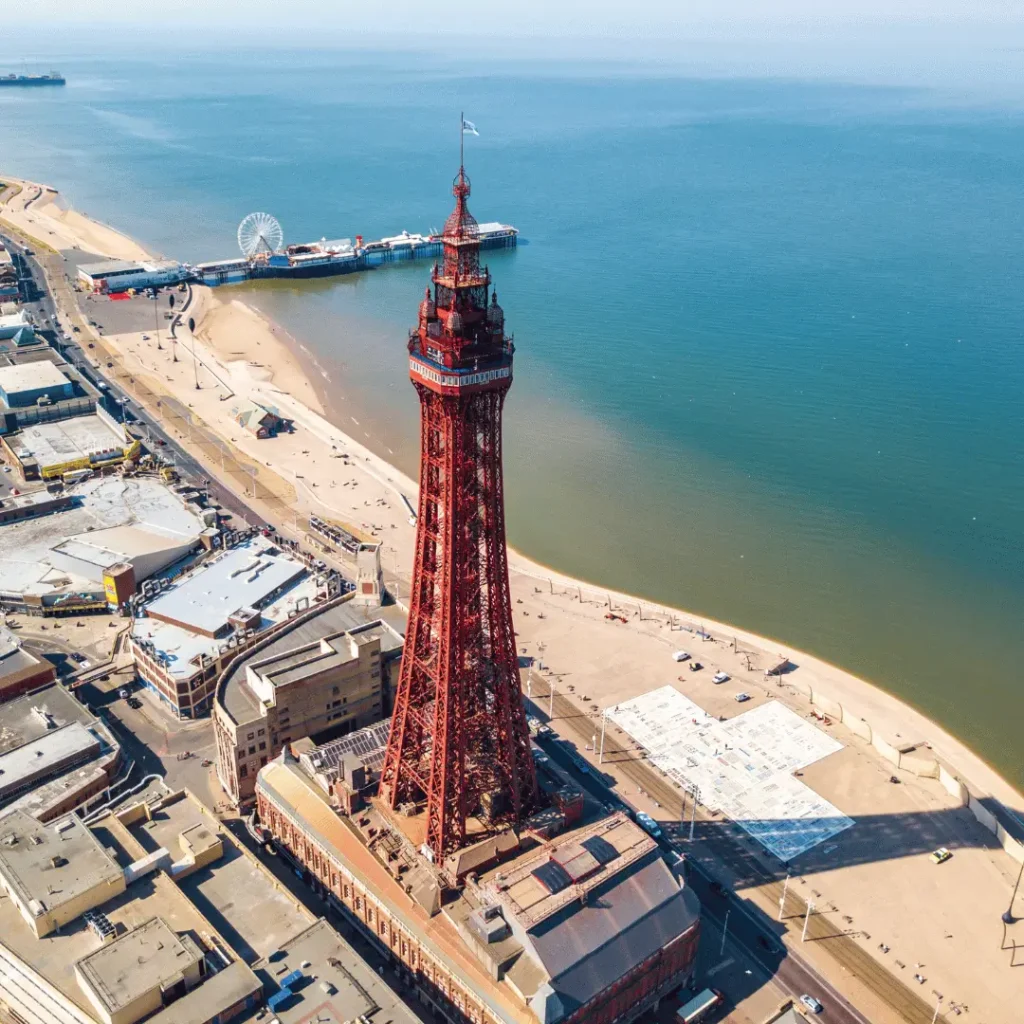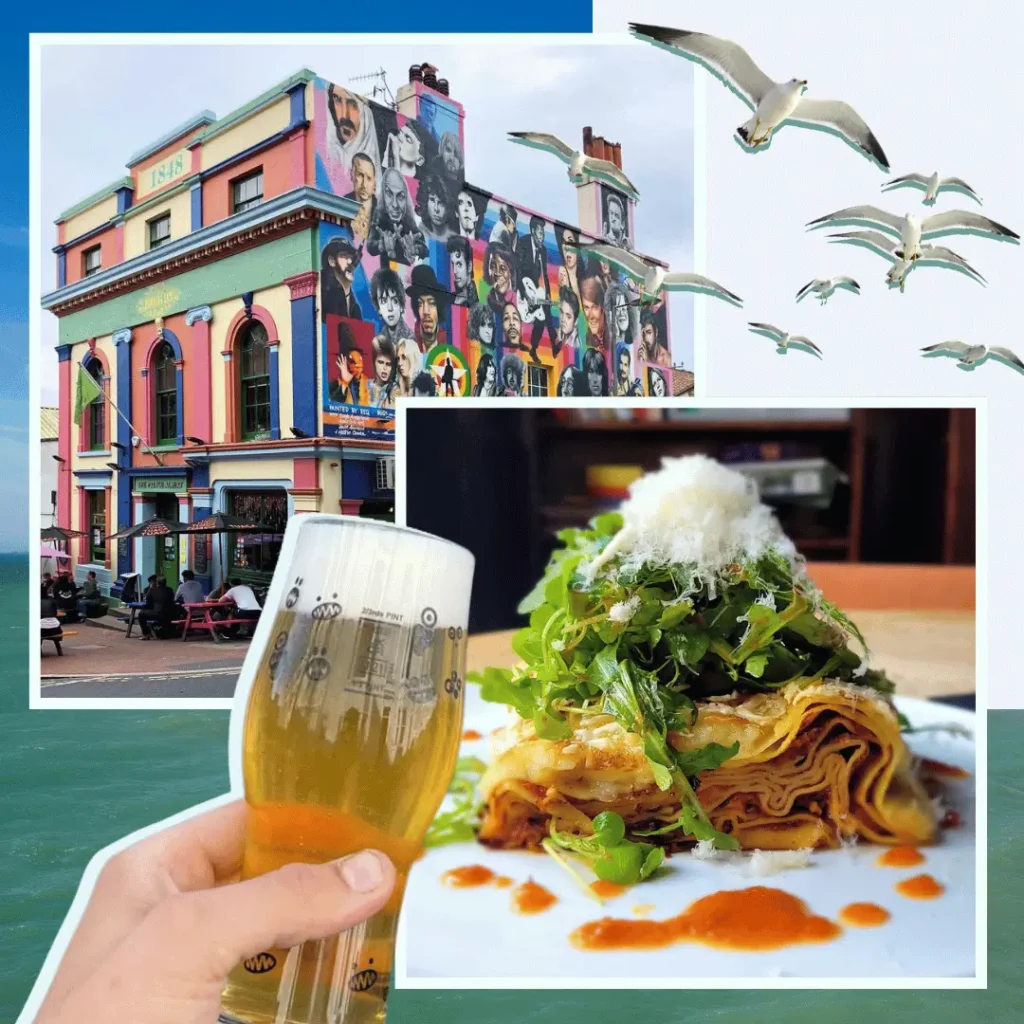Santorini exists in that rare space between reality and dream—a place so visually striking that even amateur photographers capture images worthy of magazine covers.
Those iconic white buildings with blue domes set against the deep azure of the Aegean Sea create a color palette that seems almost deliberately designed for social media perfection.
From secret sunset spots to lesser-known villages, here’s my curated guide to capturing the best photo spots in Santorini, including practical tips for timing, angles, and those little details that transform a good photo into an unforgettable one.
1. Oia’s Blue Domes (Three Bells of Fira)
- Best time to visit: Early morning (before 8am) or late afternoon (4-6pm, avoiding sunset crowds)
- Location tip: Navigate to Oia Castle, then look for the pathway leading down toward Amoudi Bay
- Crowd level: Extreme during sunset hours
The most iconic image of Santorini—three blue domes perfectly framed against the caldera—has become so popular that finding it without assistance can be challenging. The viewpoint isn’t from a public street but requires navigating through a semi-private area near the Aspaki Hotel.
For the classic shot, position yourself along the pathway that runs north of Oia Castle. You’ll find multiple angles, but the most striking frame is the three domes with the caldera waters in the background. The early morning light bathes the white buildings in a warm glow that contrasts beautifully with the deep blue domes and sea.
Photo tip: Rather than merely recreating the classic wide shot, experiment with telephoto compression that emphasizes the layers of white buildings. Also, look for detail shots of the textured white walls against that perfect Greek blue.
2. Oia Castle At Sunset
- Best time to visit: 1-2 hours before sunset (to secure a spot)
- Location tip: The medieval castle ruins at the northwestern tip of Oia
- Crowd level: Extreme (arrive very early to claim a spot)
While undeniably crowded, Oia Castle delivers a sunset experience that still somehow exceeds expectations despite the hype. The 360-degree views capture the entire cascading village of Oia with the caldera waters reflecting the changing light.
The key to a unique shot here isn’t just the sunset itself but capturing the human experience—the collective anticipation as hundreds gather, the applause that often breaks out as the sun makes its final dip, and the golden light that transforms Oia’s white landscape into a warm canvas of pinks and oranges.
For a less conventional approach, turn your camera away from the sun and toward the village itself as the buildings glow with reflected sunset light. This creates a more distinctive image than the typical sun-over-water shot replicated by thousands.
Photo tip: Use people as silhouettes in the foreground to create depth and scale, but shoot from a low angle to maintain the dramatic landscape as your primary subject.
3. Imerovigli’s Blue Church Domes
- Best time to visit: Early morning or late afternoon
- Location tip: Near Grace Hotel in Imerovigli, facing northwest toward Skaros Rock
- Crowd level: Moderate
Imerovigli offers arguably more breathtaking caldera views than Oia but with a fraction of the crowds. The blue-domed Anastasi Church creates foreground interest against the dramatic backdrop of Skaros Rock and the volcano beyond.
For the perfect composition, position yourself on the pathway near Grace Hotel, where you can frame the church dome with the entire expanse of the caldera. The elevated position of Imerovigli (the highest point on the caldera edge) provides a majestic perspective that captures the dramatic plunge to the sea below.
The late afternoon light here is genuinely mesmerizing, creating a warm glow on the white structures while maintaining definition in the caldera waters. This location also offers spectacular night photography opportunities, with the church domes illuminated against the star-filled sky.
Photo tip: Use the natural curves of the caldera edge to create leading lines that draw the eye toward Skaros Rock. A slightly longer exposure (if you have a tripod) can capture the soft movement of clouds across the caldera for added drama.
4. Skaros Rock
- Best time to visit: Golden hour, just before sunset
- Location tip: Trail begins in Imerovigli, near Grace Hotel
- Crowd level: Low to moderate
This dramatic rock formation jutting into the caldera offers some of Santorini’s most spectacular and least crowded viewpoints. The medieval ruins that crown this natural fortress create compelling compositional elements against the vast backdrop of sea and sky.
The hike takes about 20 minutes each way and involves some uneven terrain, which naturally filters out the casual photo-seekers. Your reward is a 360-degree panorama that captures both sides of the island—the caldera to the west and the distant Aegean stretching toward the Greek mainland to the east.
Photo tip: This location calls for a panoramic series, but don’t forget to capture the dramatic scale by including a human subject (your travel companion works perfectly) gazing out toward the horizon.
5. Heart of Santorini (Heart Rock)
- Best time to visit: Mid-morning to avoid harsh shadows
- Location tip: Between Megalochori and Athinios Port, off the main road
- Crowd level: Low (requires effort to find)
This natural heart-shaped opening in the volcanic rock has become increasingly popular on Instagram but remains relatively uncrowded due to its less obvious location. The “window” perfectly frames a view of the caldera, creating a romantic composition that seems almost too perfect to be natural.
To find it, follow the signs for Heart of Santorini from the main road between Megalochori and the port, then walk about 10 minutes along a dirt path. The effort required means you’ll often have this spot to yourself for as long as you need to get the perfect shot.
For couples, this spot offers endless creative possibilities—from silhouette shots through the heart to more playful forced-perspective images that place a person “inside” the heart-shaped opening.
Photo tip: Bring a zoom lens to capture both wide context shots and tighter frames. The most compelling images often show a person positioned precisely within the heart, so plan to take turns with your travel partner.
6. Red Beach
- Best time to visit: Late afternoon when the red cliffs glow
- Location tip: Near Akrotiri archaeological site
- Crowd level: Moderate to high in summer
This stunning red-sand beach backed by towering rust-colored volcanic cliffs creates a landscape that appears almost Martian. The contrast between the deep red earth, black volcanic sand, and turquoise waters produces photos with a color palette unlike anywhere else in Greece.
While the beach itself is accessible only via a somewhat challenging path (or by boat), the most photogenic views come from the overlook point near the parking area. Here you can capture the entire sweep of the horseshoe-shaped cove with its striking color contrasts.
Visit in late afternoon when the low angle of the sun intensifies the red tones of the cliffs and creates beautiful reflections on the water. If you’re feeling adventurous, the boat approach also offers unique perspectives impossible to capture from land.
Photo tip: Use polarizing filters to cut glare and enhance the saturation of the already vibrant colors. Wide-angle lenses work best to capture the dramatic scale of the cliffs surrounding the beach.
7. Atlantis Books in Oia
- Best time to visit: Late morning when the light fills the space
- Location tip: Below the main marble pathway in Oia
- Crowd level: Moderate inside the small bookshop
This charming independent bookstore has become an Instagram sensation for its cave-like interior filled with literary treasures and whimsical décor. The white vaulted ceilings, colorful book spines, and handwritten quotes create a bibliophile’s paradise that photographs beautifully.
The shop’s terrace offers another exceptional photo opportunity, with carefully arranged books framing the caldera view beyond. The juxtaposition of literary culture against Santorini’s natural beauty creates images with narrative depth beyond typical landscape shots.
Photo tip: Shoot toward the entrance from deep inside the store to capture the contrast between the dark, book-lined interior and the bright white Santorini light outside. This creates dramatic images with a cinematic quality.
8. Venetsanos Winery
- Best time to visit: Late afternoon leading to sunset
- Location tip: Just outside Megalochori village
- Crowd level: Moderate
While Santo Wines gets most of the attention, Venetsanos offers equally spectacular caldera views with a more intimate atmosphere. The multi-level terraces built into the cliffside provide numerous vantage points for combining wine culture with Santorini’s dramatic landscape.
Reserve a table for a wine tasting about two hours before sunset. This gives you time to photograph both the architectural details of this historic winery and the changing light across the caldera. The warm tones of wine glasses catching the golden hour light create stunning foreground interest against the blue sea beyond.
The lower terrace offers particularly strong compositional possibilities, with stone arches framing the caldera view and the geometric lines of the tasting tables creating leading lines toward the horizon.
Photo tip: Close-up shots of wine glasses with the caldera reflected in them create memorable images that tell a complete story of the Santorini experience.
9. Ammoudi Bay
- Best time to visit: Late afternoon as the sun hits the red cliffs
- Location tip: 300 steps down from Oia (or drive around)
- Crowd level: Moderate
This tiny fishing harbor 300 steps below Oia offers a completely different perspective on Santorini. The deep red volcanic cliffs contrasting with the turquoise water and colorful fishing boats create images bursting with Mediterranean character.
For the classic shot, position yourself along the harbor wall facing back toward the restaurants, capturing the traditional blue and white boats against the backdrop of red cliffs. The late afternoon light brings out the richest colors in the rock face.
For the more adventurous, a short walk around the bay leads to a natural swimming spot with views of a tiny church perched on a rock island—a perfect location for capturing someone mid-jump into the crystal-clear waters.
Photo tip: Use a circular polarizing filter to cut glare from the water and enhance the already vibrant colors of the boats and buildings. The high contrast between sun and shadow here makes early evening the ideal time for balanced exposure.
10. Pyrgos Village
- Best time to visit: Golden hour and blue hour
- Location tip: Central square of this hillside village
- Crowd level: Low
This well-preserved medieval village offers a photographic experience that feels like stepping back in time. The winding cobblestone pathways leading up to the Venetian castle at the summit create endless compositional possibilities, with authentic Greek life continuing largely undisturbed by tourism.
Unlike Oia’s polished perfection, Pyrgos offers a more textured, lived-in beauty. Weathered doorways, pottery displays, bougainvillea-draped passages, and cats lounging on sun-warmed stones create images with soul and narrative.
Photo tip: Focus on the interplay of light and shadow in the narrow alleyways. Look for spots where warm interior light spills out onto blue-tinted stone surfaces during blue hour for particularly compelling contrasts.
11. Emporio Village and Blue Dome Church
- Best time to visit: Morning to avoid harsh shadows in the narrow streets
- Location tip: The central kasteli (castle) area
- Crowd level: Very low
This authentic village in Santorini’s interior offers a maze-like medieval center with stark white passages, blue accents, and a stunning blue-domed church that rivals Oia’s famous examples—but without the crowds. The geometric simplicity of the architecture creates striking minimalist compositions.
The narrow passageways of the kasteli (fortified castle) create dramatic plays of light and shadow throughout the day. In the early morning, shafts of light cut through the passages, creating natural spotlights on the textured white surfaces.
For the most impactful images, position yourself along the rooftop pathways near the blue dome church, where you can capture both architectural details and sweeping views across the traditional village to the sea beyond.
Photo tip: Look for geometric compositions emphasizing the interplay between curved arches and straight lines. The contrast of blue shutters and doors against pristine white walls creates powerful minimalist images.
12. Vlychada Beach
- Best time to visit: Late afternoon for dramatic cliff shadows
- Location tip: Southern edge of the island
- Crowd level: Low to moderate
Often called “Moon Beach” for its otherworldly landscape, Vlychada features towering cliffs sculpted by wind and sea into formations resembling a lunar surface. The undulating white patterns against the dark volcanic sand create surreal compositions unlike anywhere else on the island.
Position yourself at the southern end of the beach where the cliff formations are most dramatic. The late afternoon light creates defined shadows that emphasize the sculptural quality of the rock face. The contrast between these organic formations and the geometric patterns of the nearby marina offers additional creative possibilities.
Unlike many Instagram hotspots, Vlychada rarely feels crowded, allowing plenty of time to experiment with different compositions and lighting conditions.
Photo tip: Use a human subject to provide scale against the massive cliff formations. The abstract patterns in the rock face also reward tighter compositions that transform landscape into abstract art.
Beyond the Shot: Practical Photography Tips for Santorini
Finding the best photo spots in Santorini is more than just finding the right locations. These practical tips will help you make the most of the island’s unique conditions:
- Pack smart – Bring extra batteries (the constant shooting drains them quickly) and a polarizing filter to manage the extreme contrast between white buildings and the deep blue sea.
- Rise early – The morning light in Santorini is magical and far less crowded. The hour after sunrise offers perfect illumination for the white architecture without harsh shadows.
- Protect your gear – The combination of sea spray, occasional wind, and volcanic dust can damage equipment. Bring appropriate cleaning supplies and protective covers.
- Respect local life – Remember that those picturesque doorways and staircases are often people’s homes. Always ask permission before photographing private property or people.
- Look beyond the obvious – Some of the best Santorini images capture small details—weathered blue doors, geometric shadows on whitewashed walls, or the contrast of vibrant bougainvillea against pristine architecture.
Most importantly, remember to occasionally put down your camera and simply absorb the beauty around you.
Santorini’s magic extends far beyond what can be captured in photographs, and your most precious memories often come from the moments between shots—that perfect Greek salad at a cliffside taverna, the conversation with a local shopkeeper, or simply standing in silent awe as the Aegean sun slips below the horizon.




